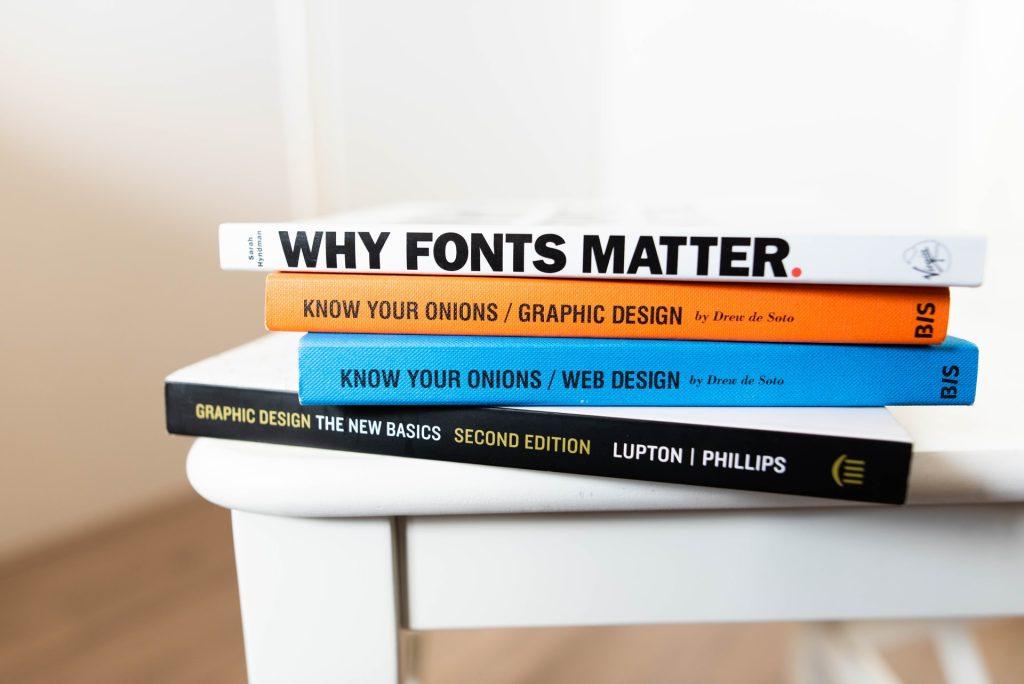If you hire someone to do some design work for you, you might wonder what the difference is between graphic design and web design. You might also notice that an agency has both a web designer and a graphic designer. Why hire two people when both are design jobs? Are the terms interchangeable? Do they require a vastly different set of skills in order to get the job done right? Understanding the similarities and differences can help you communicate your wants and needs more effectively to a designer at a digital marketing company you’ve hired and get what you’re looking for faster.
At a surface level, graphic design and web design are pretty similar. Both require a solid understanding of concepts like typography, layout, visual hierarchy, and color theory, to name a few. Whether you’re designing for print or for digital marketing materials, you have to know how to make things look “right.” Communicating information or an idea is the main goal no matter the concentration. But when it comes time to implement, the blurred line between web design and graphic design starts to become a little clearer.

What is Graphic Design
Graphic designers create visuals that convey information and ideas in a mostly static setting. This could be a company’s logo, a business card, packaging for a product, an interesting t-shirt for an event, or an eye-catching infographic that conveys complex information in an easy-to-read format. There will normally be size constraints and print specifications that are given up front for them to work within.
These designers use photo manipulation software like Photoshop, and illustration or vector software like Illustrator or InDesign to draft and design the finished product. This is where the bulk of their work takes place, and much of the formal education involving graphic design is built around these programs.
What is Web Design
Web design takes many principles of graphic design and applies them instead to the internet, and the myriad devices that it can be viewed from. The fundamentals remain the same, but the implementation does not. These designers must take into account the user interface (UI) and user experience (UX) of a website, or how a user will interact with and navigate through the content. Web designers are tasked not only with the organization of information on a page, but the organization of the pages themselves and how they will be interacted with across the site.
They must also factor in how content will be shifted around and adjusted when viewed from devices with varying screen sizes. The difference between mobile devices and larger displays is the most documented, but even variations in desktop display size can have a huge impact on how a website looks and functions.
Much of the same software is used in the initial design phase, but because websites are built using code such as HTML, PHP, CSS, and JavaScript, a text editor created with development in mind is also a must. The time a web designer spends working is split between image creation software and development software.

The Differences
Graphic design allows for tons of freedom in what visual elements can be included in the finished product. Unique fonts and crazy compositions are much easier from a technical standpoint because, in most cases, the finished product will be flattened into a single image for print or screen. The dimensional restrictions are normally static, so there is generally much less concern for how something will look when finalized compared to when it is being worked on. This often requires a much greater attention to detail, however, as specific tolerances are much tighter when designing for print and packing products. Graphic designers have to design exactly to the printer’s specifications. Bleeds and margins are a big deal.
The web presents more technical limitations for what can and can’t be used. Fonts, for example, often behave much differently on the web than they do in design software or word processors. Customizations like ligatures may be stripped down or absent entirely in a font’s web version, requiring concessions to be made when converting a mockup to a fully functional website.
“Well why can’t we just make a custom font and use it?” you say. Installing custom fonts leads us to another hurdle with web design: load time. Unlike graphic design, which results in a single flattened image as the end product, web content is dynamically loaded by a user’s browser when they visit a site, so the more files there are on a server and the larger they are, the slower the website will become. Research has shown (and Google Developers have constantly said)that the slower a website is, the more likely users are to leave a site before viewing any internal pages. This leads to a higher bounce rate for the site, and higher bounce rates negatively affect SEO and rankings when someone searches for your industry. In the search engine’s brain, a slow site isn’t as useful as a faster one.
Screen size is also a major consideration. Content that’s laid out a particular way for desktop displays will need to be reorganized and sometimes even redesigned to display properly on smaller pocketable devices like your iPhone. This can require font size and line spacing adjustments, as well as image cropping.
Then there’s the issue of dynamic content. While the overall design of a website will stay the same to remain visually consistent, the content of each individual page or blog post will not. The ever-changing nature of a website needs to be taken into account when creating the layout of a page so no matter the content and its length, it will still look right. This is difficult to future-proof, so ongoing relations with your web designer are usually a good idea to keep things looking and functioning properly.
Same Fundamentals Applied Differently
It might seem like there are more differences than similarities between the two professions. These days, the work of graphic and web designers will cross over into each other’s realms. As discussed earlier, the fundamentals are ultimately the same. It’s how those fundamentals are applied that keep the two careers from merging into one.
If you’re looking for a digital marketing company that knows design like the back of its hand to keep you and your business up to date, look no further than the talented team of designers, developers, marketers, and content creators at On Target. Give us a call at 407-830-4550, or contact us here.

